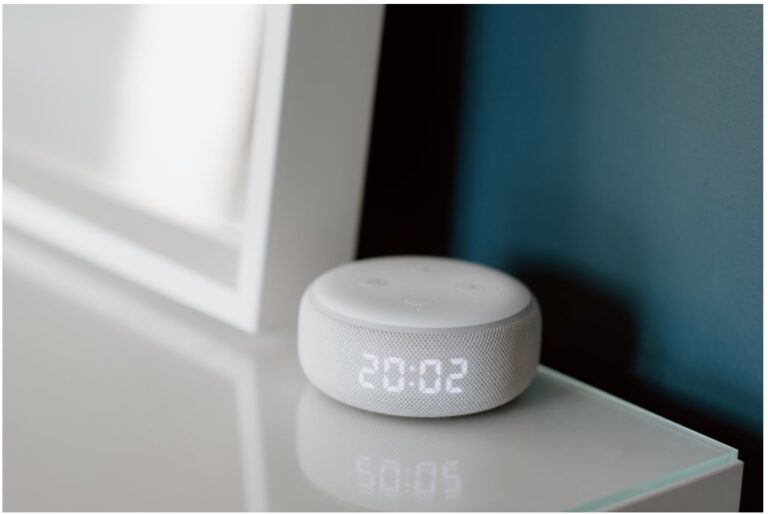The increasing number of Internet of Things (IoT) devices makes everyday life easier and more convenient. However, they can also pose many security risks. Criminals are quick to take advantage of the expanding attack surface. Luckily, there are ways you can leverage developing cybersecurity measures like “zero-trust” architecture to prevent bad actors from succeeding.
Understanding Zero Trust
Zero trust is an emerging security stance that assumes users and devices can be sources of malicious attacks. The proactive defense approach prompts the system to authenticate the intent of both elements in a secure network regardless of location, ownership and other factors.
Organizations adopting a zero-trust architecture are less prone to various cyberattacks and enjoy a more secure network. The stringent authentication, authorization and monitoring processes allow system administrators to track and spot suspicious user and device activity within a network.
Common Security Risks With IoT Devices
“The increasing number of Internet of Things (IoT) devices makes everyday life easier and more convenient.”
IoT devices are built to meet user demands with ease and convenience. This unique configuration enables users to issue commands to a string of connected devices seamlessly and effortlessly. However, the characteristics that make these devices convenient also pose unique security challenges.
Here are several security risks associated with IoT devices:
- Weak default passwords: IoT devices often use weak default passwords to make them easy to set up at every user level. Users tend to keep rather than change them to something more secure, leaving the items susceptible to unauthorized access by malicious third parties.
- Lack of security features: Manufacturers often do away with stringent authentication processes and other security measures to make IoT devices work seamlessly. Hackers can take advantage of this oversight to access networks freely and easily.
- Firmware vulnerabilities: Like many other gadgets, IoT devices depend on firmware to function correctly. Some manufacturers overlook fixing existing vulnerabilities like bugs and glitches in the system. These weak spots make enticing entry points for hackers who want to access networks and valuable data.
- Interconnectivity: One of the main selling points of IoT devices is their interconnectivity. Gadgets communicating with one another make everyday tasks easier and more efficient. However, it can also lead to security issues since bad actors can compromise one device and gain access to others in the same network without security measures.
- Data privacy issues: IoT devices collect and analyze data constantly and in real time, making them a treasure trove of sensitive information valuable to cybercriminals. These items can cause breaches and misuse of sensitive information if unprotected.
- Lack of constant security updates: Unlike mobile phones, computers and laptops with scheduled automated security updates, users must manually update their IoT devices to keep them working flawlessly. Some forget to do this and unconsciously expose themselves to cyberattacks.
Zero-Trust Applications for IoT Devices
“Developers, designers and engineers should view this new cybersecurity approach as a wise addition to secure the constantly evolving ecosystem of IoT devices.”
Zero-trust security measures can help users protect themselves, their data and their devices from unauthorized access. Developers, designers and engineers should view this new cybersecurity approach as a wise addition to secure the constantly evolving ecosystem of IoT devices. Here are several ways you can use zero trust to mitigate security risks.
Strict Access Control
Adopting a zero-trust approach enables administrators to limit hackers’ lateral movement within a network by ensuring users and devices only gain access to their original destinations — no more, no less.
You can use strict access control to significantly reduce the chances of unauthorized entry into secure networks where critical resources like personal databases and other sensitive information are stored.
Immediate Authentication
Zero-trust automatically requires users and devices to undergo a stringent authentication process to verify their identity and integrity. Some systems go beyond requesting credentials to provide access and add multifactor authentication (MFA) to the protocol.
The added layer of security ensures the system only accepts authorized users and devices to reduce the risk of cyberattacks from malicious third parties. Adopting a zero-trust architecture in your organization helps make penetration extremely difficult for cybercriminals to discourage future attacks.
Close Monitoring
Aside from restricting access and adopting a multilayer defense system, administrators can also closely monitor user and device activity. This lets your security teams identify possible threats in real time to prevent hackers from moving in on critical areas in a secure network.
Cybersecurity professionals can quickly react to ongoing threats by analyzing user activity and comparing them with the latest attack patterns according to threat intelligence and research. Administrators can also look for erratic behavior and unusual login attempts and flag them for investigation.
Network Segmentation
“Adopting a zero-trust defense posture can help companies shield their users and systems from data breaches and malicious attacks.”
Network segmentation works by cordoning different network sections into smaller, isolated systems. This zero-trust approach limits bad actors’ movements within a network. It also prevents them from compromising other segments in case of an attack.
This approach allows administrators in your organization to remove an affected device from the network, preventing malicious code from spreading to other devices. Segmentation or segregation significantly improves the cybersecurity resiliency of systems by making damage control more manageable.
Data Encryption and Protection
Another way zero trust protects systems, users and private data from malicious attacks is by encrypting the data transmitted between IoT devices. Data encryption renders intercepted information useless to cybercriminals without the decryption key.
Private data and other sensitive information are valuable resources in the digital world. Criminals always seek ways to steal and sell them to the highest bidder. Improved security measures like zero trust prevent them from accessing and using valuable data for personal gain.
Using Zero Trust to Improve IoT Security
Criminals are getting craftier with the help of new technologies. Organizations must invest in newer, smarter cybersecurity solutions to prevent valuable data from falling into the wrong hands. Adopting a zero-trust defense posture can help your company shield its users and systems from breaches and malicious attacks.










